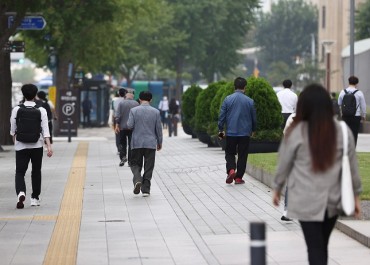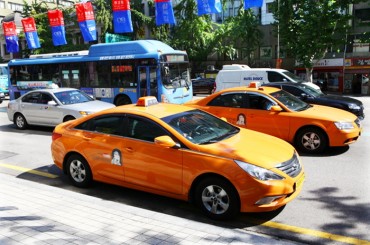
The demographic outlook came as deaths are set to outnumber births in Asia’s fourth-largest economy beginning in 2019. (image: Korea Bizwire)
SEJONG, Mar. 28 (Korea Bizwire) — South Korea’s statistics agency forecast Thursday that the country’s population is likely to peak at 51.94 million in 2028 before declining to 39.29 million in 2067.
Statistics Korea’s latest medium variant projection is bleaker than its previous assessment, made in 2016, when South Korea’s population was projected to fall to 43 million in 2065 after reaching a high of 52.95 million in 2031.
The looming population decline has sounded alarm bells in the country that has been plagued by the low birthrate for more than a decade.
The government said it will create a task force next month to come up with comprehensive measures, by June, to tackle demographic challenges.
The demographic outlook came as deaths are set to outnumber births in Asia’s fourth-largest economy beginning in 2019.
In a worst-case scenario, South Korea’s population projection for 2067 is 33.65 million after peaking at 51.65 million in 2019, according to the statistics agency.
The number of newborns in South Korea came to 326,900 in 2018, a sharp decline from a high of 1 million in 1970, according to the data compiled by Statistics Korea.
In 2018, South Korea’s total fertility rate — the average number of children a woman bears in her lifetime — hit a record low of 0.98, much lower than the replacement level of 2.1 that would keep South Korea’s population stable at 51 million.
The statistics office said South Korea’s total fertility rate could remain below 1 until 2024 before edging back to above 1 in 2025 and reaching 1.27 in 2040.
The agency forecast that the number of newborns in South Korea could hover around 290,000 in 2021 before falling to around 210,000 in 2067.
It also said total deaths could reach more than 400,000 in 2028 before rising to 740,000 in 2067, compared with 290,000 in 2017.

The decline in childbirths could reduce the working-age population — those aged between 15 and 65 — while increasing the ratio of older people, a situation that could place heavy financial burden on young people. (image: Yonhap)
The decline in childbirths is blamed on a sharp fall in the number of marriages.
Some young South Koreans are opting to distance themselves from life’s three major milestones — dating, marriage and having children — because they cannot find decent jobs amid a prolonged economic slowdown.
Other factors are the high cost of private education for kids and skyrocketing real estate prices, as well as the difficulties women face in finding jobs after spending extended time away from work to raise children.
The government said it will aggressively push for measures to reduce childcare burdens, and to strengthen housing support to young people, including newlywed couples.
The decline in childbirths could reduce the working-age population — those aged between 15 and 65 — while increasing the ratio of older people, a situation that could place heavy financial burden on young people.
The working-age population is expected to come to 33.95 million in 2030 before falling to 17.84 million in 2067, compared with 37.57 million in 2017.
Meanwhile, the number of South Koreans aged 65 years or older could account for 20 percent in 2025 and surpass 40 percent in 2051, compared with 13.8 percent of the country’s population in 2017.
A country is defined as an aged society when more than 14 percent of its people are 65 or older.
The statistics agency said every 100 working-age people should support 37 people — who are aged younger than 15 or aged over 65 — in 2017. The ratio is the lowest among the Organization for Economic Cooperation and Development, a group of 36 mostly rich nations.
But South Korea’s ratio is forecast to jump to 117.8 in 2065, the highest among the OECD member states. It means that every 100 working-age people will have to support 117.8 people.
Moody’s Investors Service said that in the coming decades, South Korea’s potential GDP growth will gradually decline, towards 2 percent annual growth, as decline in the working-age population diminishes the contribution of labor to growth.
“Korea will start to experience a rapid decline in working-age population, which will add a further drag on potential growth over the next two decades,” the global ratings agency said in an October report.
(Yonhap)






